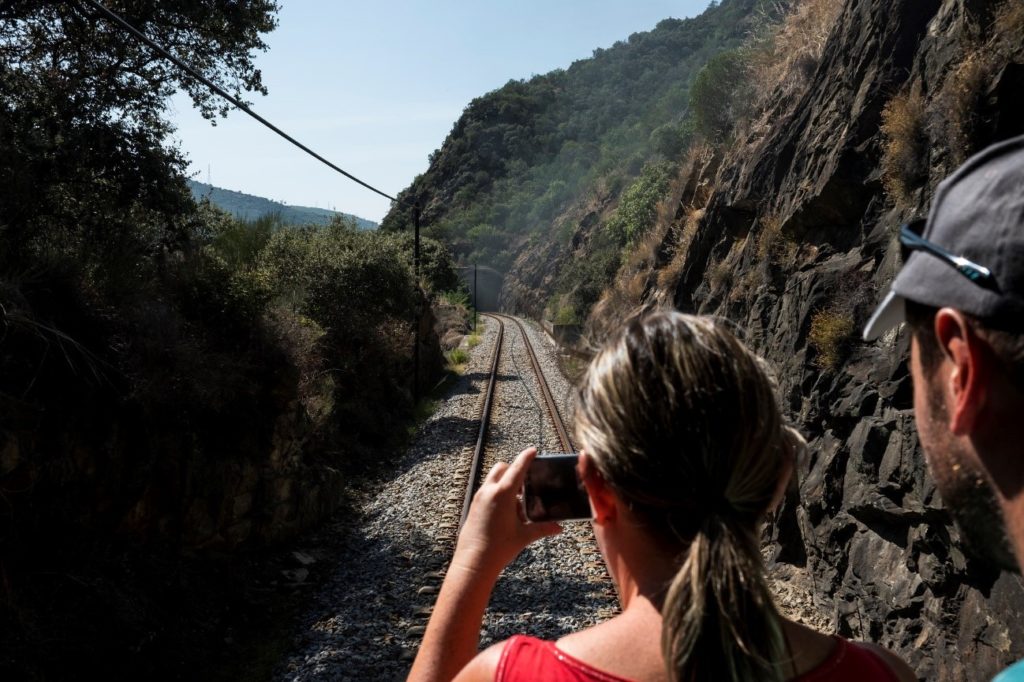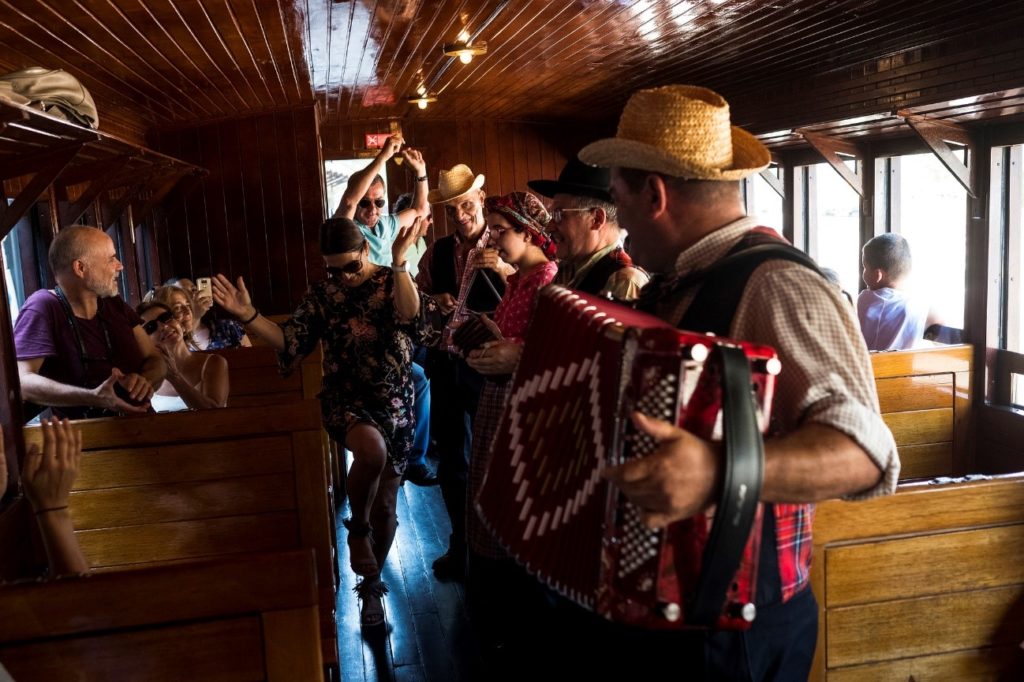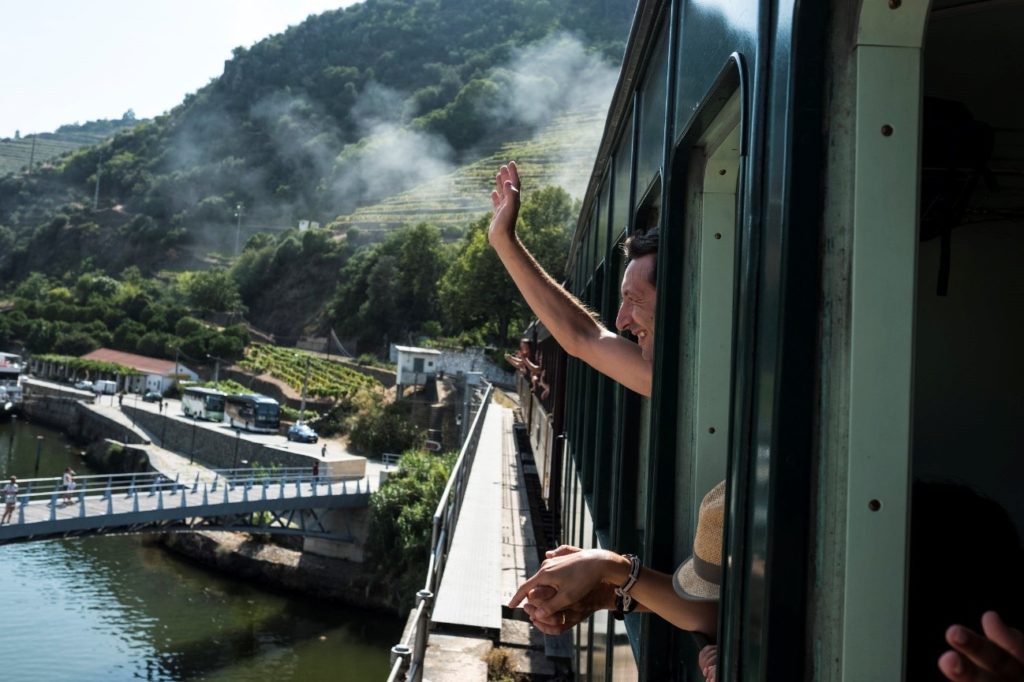Being a touristic trademark of Portugal, the Douro Line is part of a magnificent landscape and is the only one in the world connecting three designated World Heritage Sites: Porto’s Historic Center; the Alto Douro Wine Region; and the Prehistoric Rock Art Sites in Vila Nova de Foz Côa.
This is known as one of the masterpieces of Portuguese railway and a journey worldwide recognized by the International Union of Railways (UIC). The railway played a pivotal role in connectivity and facilitating the transportation of both people and goods, especially the region’s famed wines. It effectively overcame the historical isolation of the area, replacing limited road access and river navigation.

Currently, this Line spans over 170 kilometers, connecting Porto to Pocinho, served by 37 stations and stops along the picturesque Douro River.
Travelling on the Douro Historical Train is to take a trip back in time, covering 36 kilometers at a leisurely pace not exceeding 50km/h. The steam locomotive and the 5 historical carriages run between Régua and Tua, on a unique journey into the past, marked by the stunning landscape, allowing passengers to peacefully enjoy some of the most beautiful picture postcard scenery of the Douro Region. Operating between July and October, the steam service recreates an authentic atmosphere, allowing passengers to immerse themselves in the historical charm.

At Régua, an important railway interface, passengers leave from the 21st century to travel through History, letting themselves be enveloped by the resonant whistle of the steam locomotive and the nostalgic details of wooden coaches. The journey is complemented by a toast with port wine, traditional Régua sweets, and typical folk songs and dances.
The steam locomotive whistle echoes through the valley and marks the departure for the journey. Open windows and balconies provide passengers with optimal vantage points to savor the experience… and few are those who remain seated.
The stop at Pinhão allows a visit to the Wine House within the station, where it’s possible to find a wide variety of the Douro wines, from Casa Ferreirinha, producer of the famous Barca Velha as well as Porto wines from Ferreira, Offley and Sandeman. Faced with such a selection of good wines and gourmet products, the hardest part is to resist.
The beautiful Pinhão station, adorned with 24 panels comprised of 3047 tiles, stands as an open-air gallery showcasing the essence of the Douro Region and its wine industry, agricultural activities as well as landscapes and traditions.

After a water refill for the steam locomotive, the journey resumes with the Douro on the right side. This entire landscape is colored by vineyards and villages, unfolding the majesty of the Douro Wine Region. The approach to the Tua river brings with it a change in the landscape, here more rugged and rocky. Crossing the metal bridge near Tua station marks a distinctive moment and the gateway to the Douro Superior sub-region.
At Tua, it’s time to take a break and appreciate the Douro river, while waiting for the return, with new views and angles on the region landscape, capturing the changing sunlight and the valley’s evolving shadows. Don’t forget to register these unforgettable moments through photos or videos, preserving the memories of this unique rail experience.

Source: CP – Comboios de Portugal; VisitPorto.
Photo credits: Porto Convention & Visitors Bureau (CC BY-NC-ND – Associação de Turismo do Porto e Norte, AR)
Learn more about Porto – Great Wine Capital